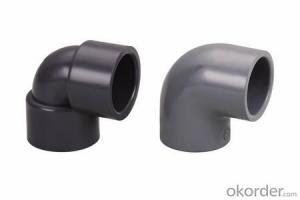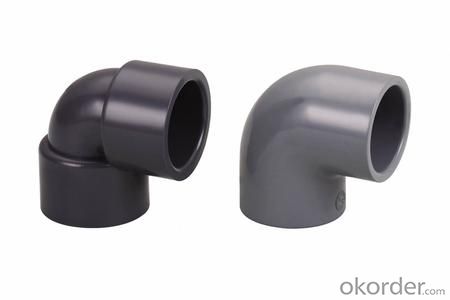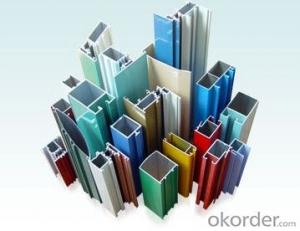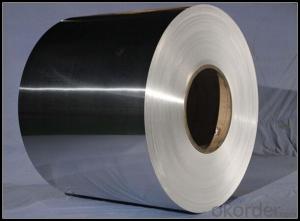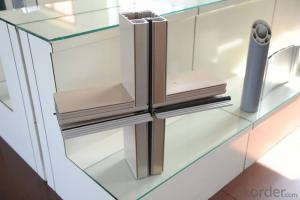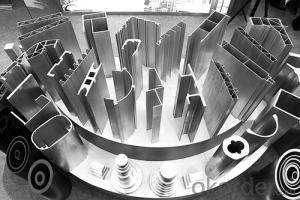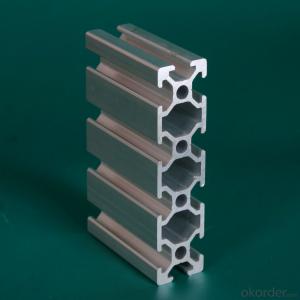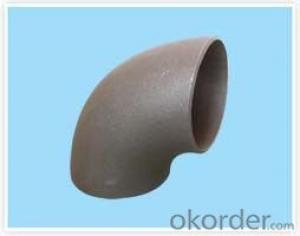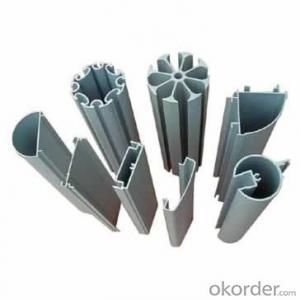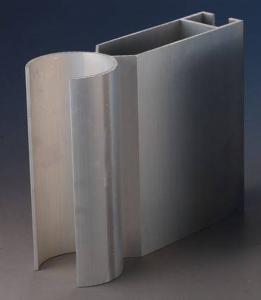90 Degree Aluminum Elbow - Aluminum Extrusion Profiles 2.5 X 2.5 for Construction
- Loading Port:
- Shanghai
- Payment Terms:
- TT OR LC
- Min Order Qty:
- 5 m.t.
- Supply Capability:
- 1000 m.t./month
OKorder Service Pledge
OKorder Financial Service
You Might Also Like
Specifications
90 degree aluminum elbow:
Material : carbon steel , stainless steel and alloy steel,
90 degree aluminum elbow
Specifications
ASTM B16.9 A234 WPB 90degree 1.5D carbon steel elbow
1.A234 WPB elbow
2.size:1/2"-72"
3.material:A234 WPB
4.API CE ISO
ASTM B16.9 A234 WPB 90degree 1.5D carbon steel elbow
1.A234 WPB elbow
2.size:1/2"-72"
3.material:A234 WPB
4.API CE ISO
Size | 1/2''-24 seamless elbow 26''-72''butt weld elbow |
Wall Thickness | SCH10-SCH160,STD,XS,XXS, GOST , DIN, JIS standard thickness |
Standard | ASTMA234,ASTM A420,ANSI B16.9/B16.28/B16.25,ASME B16.9, JIS B2311-1997/2312, JIS B2311/B2312, DIN 2605-1/2617/2615, GB 12459—99,GOST,EN Standard etc. |
Material | Q235, 20#, 10#, Q345 A234 WPB, WP5, WP9,WP11, ST37.0,ST35.8,ST37.2,ST35.4/8,ST42,ST45,ST52,ST52.4 STP G38,STP G42,STPT42,STB42,STS42,STPT49,STS49 |
Application | Low and middle pressure fluid pipeline,boiler, petroleum and natural gas industry,drilling,chemical industry, electric industry,shipbuilding, fertilizer equipment and pipeline, structure,petrochemical, pharmaceutical industry |
Surface | Sand blasting, black anti-rust oil or galvanized , 3PE,etc. |
Package | Seaworthy Package, Plastic film,Ptywood Wooden Cases or wooden pallet or |
Certificate | ISO9001:2008, CE, API , SGS,BV, etc |
Capacity | 50000tons/year |
Advantages | 1.Reasonable price with excellent quality 2.Abundant stock and prompt delivery 3.Rich supply and export experience, sincere service 4. Reliable forwarder, 2-hour away from port. |
- Q: Is it possible to utilize aluminum profiles in the construction or structure of commercial buildings and factories?
- <p>Yes, aluminum profiles are commonly used in commercial buildings and factories due to their strength, durability, and lightweight properties. They are ideal for constructing frameworks, window and door frames, and support structures. The corrosion resistance of aluminum also makes it suitable for industrial environments where exposure to harsh chemicals or weather conditions is a concern. Additionally, aluminum profiles are easy to maintain and can be recycled, contributing to the sustainability of construction projects.</p>
- Q: Are aluminum profiles suitable for sports equipment?
- Yes, aluminum profiles are suitable for sports equipment. Aluminum is lightweight, durable, and corrosion-resistant, making it an ideal material for various sports applications such as bicycles, tennis rackets, golf clubs, and ski poles. Additionally, aluminum profiles can be easily formed and customized to meet specific design requirements, making them a popular choice in the sports industry.
- Q: Is it feasible to recycle aluminum profiles economically and in significant quantities?
- <p>Yes, aluminum profiles can be recycled at a reasonable cost and volume. Recycling aluminum is more cost-effective than mining and refining new aluminum from bauxite. The process requires less energy, which reduces costs. Additionally, aluminum has a high recycling rate, with about 75% of all aluminum ever produced still in use today. This indicates that aluminum recycling is both economically viable and can be done in significant volumes, contributing to sustainability and waste reduction.</p>
- Q: How do aluminum profiles contribute to the reduction of carbon footprint?
- Aluminum profiles contribute to the reduction of carbon footprint primarily through their lightweight nature and recyclability. As aluminum is a lightweight material, it requires less energy to transport and install compared to heavier materials, resulting in lower carbon emissions. Additionally, aluminum profiles are highly recyclable, allowing for the conservation of resources and reduction of energy consumption during the manufacturing process. By choosing aluminum profiles over other materials, carbon emissions can be minimized, contributing to a more sustainable and eco-friendly approach.
- Q: Which price is expensive for aluminum profiles 6063-T6 and 6063-T5?
- 2.1 first digit: indicates the main addition of alloying elements.1: pure aluminum2: mainly adds alloy element to copper3: mainly adds alloying elements manganese or manganese and magnesium4: mainly adds alloy element to silicon5: mainly adds alloying elements to magnesium6: mainly adds alloy elements to silicon and magnesiumThe main additions of 7: alloy elements are zinc and magnesium8: does not belong to the new alloy
- Q: What are the design options for aluminum profiles?
- There are several design options available when it comes to aluminum profiles, allowing for a wide range of applications and customization possibilities. Here are some of the design options commonly used with aluminum profiles: 1. Extrusion Shapes: Aluminum profiles can be extruded into various shapes, such as square, rectangular, round, T-shaped, I-shaped, or custom profiles. This flexibility in shape allows designers to create profiles that perfectly match the requirements of their project. 2. Surface Finishes: Aluminum profiles can be finished with different surface treatments to enhance their appearance and protect them from corrosion. Some popular surface finishes include anodizing, powder coating, polishing, brushing, and laminating. These finishes can provide a variety of colors, textures, and levels of glossiness to match specific design preferences. 3. T-Slot Profiles: T-slot profiles are a type of aluminum extrusion that features a T-shaped slot on one or more sides. These profiles are commonly used in the construction of frameworks, machine guards, and other structures that require easy assembly and reconfiguration. The T-slot design allows for easy insertion and adjustment of connecting elements such as bolts, nuts, and brackets. 4. Thermal Break Profiles: Thermal break profiles are designed with a thermal barrier inserted between the interior and exterior parts of the profile. This design helps to minimize the transfer of heat or cold between the two sides, making them suitable for applications where thermal insulation is important, such as windows, doors, and curtain walls. 5. Customization: Aluminum profiles can be further customized through additional machining processes, such as cutting, drilling, tapping, milling, or bending. These processes allow for the creation of unique shapes, hole patterns, or features that meet specific design requirements. 6. Integration: Aluminum profiles can be designed to integrate with other components or systems, such as hinges, connectors, fasteners, or brackets. This integration capability provides flexibility in assembly and allows for the creation of complex structures or modular systems. Overall, the design options for aluminum profiles are vast, allowing for versatility, functionality, and aesthetic appeal. Designers can choose from a range of shapes, finishes, and additional features to create aluminum profiles that meet their specific project needs.
- Q: Can aluminum profiles be used for electrical bus ducts?
- Indeed, electrical bus ducts can be constructed using aluminum profiles. Within the electrical industry, aluminum is widely employed as it possesses exceptional conductivity and lightweight characteristics. Its remarkable electrical conductivity plays a vital role in efficiently transmitting electrical power. Furthermore, aluminum profiles exhibit durability, resistance to corrosion, and the ability to endure high temperatures, rendering them suitable for diverse industrial applications. Nonetheless, it is crucial to carefully assess the project's unique requirements and regulations in order to ascertain that the aluminum profiles conform to the essential electrical and safety standards.
- Q: Which is the highest price of aluminum profile 60616063?
- Generally speaking, 6061 of a little higher, but also depends on the quality, whether there is aging treatment, such as T6 status;6063, low silicon content, relatively soft, oxidation effect is better than 6061, suitable for appearance pieces, LED lamp holder, etc.; 6061, cutting performance is good, suitable for structural parts.
- Q: What are the environmental effects of utilizing aluminum profiles in the construction industry?
- <p>Yes, there are environmental impacts associated with using aluminum profiles in construction. Aluminum production is energy-intensive, which contributes to greenhouse gas emissions. However, aluminum is recyclable, and its recycling process requires significantly less energy than primary production, reducing environmental impact. Additionally, aluminum profiles are lightweight, which can reduce transportation emissions. Despite these benefits, concerns remain about the energy used in aluminum production and the potential for leaching of aluminum into the environment, which can affect soil and water quality.</p>
- Q: Are aluminum profiles energy-efficient?
- Yes, aluminum profiles are considered to be energy-efficient. Aluminum is a highly conductive material, which means it can effectively transfer heat or cold. This property allows aluminum profiles to provide excellent thermal insulation, helping to minimize energy loss and maintain a consistent indoor temperature. Additionally, aluminum profiles can be designed with thermal breaks, which further enhance their energy efficiency by reducing heat transfer between the inside and outside of a building. These features make aluminum profiles a popular choice for windows, doors, and other building components, as they contribute to energy savings and reduce the overall carbon footprint of a structure.
Send your message to us
90 Degree Aluminum Elbow - Aluminum Extrusion Profiles 2.5 X 2.5 for Construction
- Loading Port:
- Shanghai
- Payment Terms:
- TT OR LC
- Min Order Qty:
- 5 m.t.
- Supply Capability:
- 1000 m.t./month
OKorder Service Pledge
OKorder Financial Service
Similar products
Hot products
Hot Searches
Related keywords
